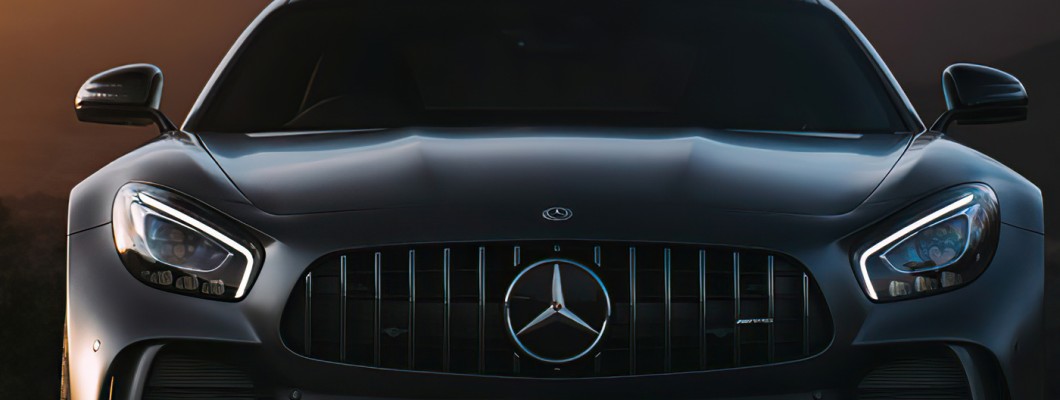
What is it about
Mercedes-Benz that has captured the hearts and minds of car enthusiasts
worldwide? How did this automotive giant emerge as a leading force in the
industry, setting the standard for luxury, performance, and innovation? In this
journey through the comprehensive history of Mercedes-Benz, we will delve into
the origins of the brand, the vision of its founding fathers, and the
pioneering models and innovations that have shaped not just the company but the
automotive industry as a whole.
The story of Mercedes-Benz
is one of determination, ambition, and a relentless pursuit of excellence.
Behind the iconic three-pointed star logo lies a rich history of ground breaking achievements and a proud legacy that continues to inspire the brand today. From
its humble beginnings with the invention of the internal combustion engine to
its present-day status as a luxury automotive powerhouse, the history of
Mercedes-Benz is a testament to the power of innovation and the indomitable
spirit of its founders.
Join us as we explore the
incredible story of Mercedes-Benz, uncovering the milestones that have defined
this legendary brand. We’ll shed light on the lives and works of its founding
fathers, Karl Benz and Gottlieb Daimler, the birth of the Mercedes-Benz brand,
and the company’s significant contributions to motorsports. We’ll also examine
its technological advancements, environmental efforts, and the enduring legacy
of this iconic brand that continues to drive the automotive industry forward.
Short Summary
- Karl Benz and Gottlieb
Daimler are the founding fathers of Mercedes-Benz, established in 1926.
- The brand has pioneered
models and innovations such as the iconic Benz Patent Motor Car, 260D
Model for fuel efficiency and environmental sustainability, Silver Arrows
to shape motorsports history.
- Mercedes-Benz is
renowned globally for its technological advancements, environmental
efforts & commitment to quality & performance.
The Founding Fathers: Karl Benz and Gottlieb
Daimler
At the heart of the
Mercedes-Benz story are two innovative engineers who, despite working
independently, shared a common vision for the future of the automobile: Karl
Benz and Gottlieb Daimler. These brilliant minds laid the foundation for a
company that would revolutionize the automotive industry with the invention of
the internal combustion engine.
Their respective companies
would later join forces to create the Daimler-Benz AG, the birthplace of the
Mercedes-Benz brand we know today.
Karl Benz
Karl Benz, a German engineer
and inventor, is credited with creating the first automobile and founding
multiple companies throughout his career. His initial company, Carl Benz and
August Ritter, Engineering Workshop, eventually evolved into the Daimler-Benz
AG company. Driven by his passion for innovation, Benz established the Mannheim
Gas Engine Factory (Benz & Cie. Rheinische Gasmotoren-Fabrik Mannheim) in
1883, where he focused on producing stationary and vehicle engines.
The Benz Motor Velocipede,
often referred to as the “Velo,” was the first automobile produced by Benz
& Cie. It marked a milestone in the history of automotive production, being
the first car to be mass-produced. This ground breaking four-wheel motorized
two-seater revolutionized the Mercedes-Benz cars industry with its lightweight
design and cost-effectiveness. The Velocipede’s success, with approximately
1,200 models sold, cemented Benz’s reputation as a pioneer in the automotive
industry.
Gottlieb Daimler
Gottlieb Daimler, an
engineer with a keen interest in technology, shared a similar vision with
Bertha Benz and was particularly captivated by the potential of the internal
combustion engine. In 1882, Daimler appointed Wilhelm Maybach as his technical
assistant, marking the beginning of a fruitful partnership that would lay the
groundwork for the Daimler car.
Together, Daimler and
Maybach co-founded Daimler-Motoren-Gesellschaft (DMG), a company that would
later play a significant role in the development of the Mercedes-Benz brand.
However, discord arose between the partners of DMG, as Max Duttenhofer wanted
to focus on stationary engines, while Daimler and Maybach were determined to
concentrate on vehicle production.
The Birth of Mercedes-Benz Brand
The Mercedes-Benz brand as
we know it today was established in 1926, following the merger of Karl Benz and
Gottlieb Daimler’s companies into the Daimler-Benz company. The first Mercedes
automobile was marketed in 1901 by DMG, thanks to the efforts of Emil Jellinek,
a successful trader with significant involvement in the automotive industry.
Over the years, the Mercedes-Benz brand has expanded its range of models
catering to various segments of the market, from the entry-level A-Class up to
the luxurious S-Class.
Jellinek’s keen interest in
powerful and fast vehicles led him to request DMG to manufacture these for him.
His racing success under the pseudonym of his daughter’s first name, Mercedes,
caused the name to become renowned in motoring circles in the late 1890s. This
marked the beginning of a new era for the company, as the Mercedes name became
synonymous with luxury, performance, and innovation.
Today, the Mercedes-Benz
brand continues to push the boundaries of automotive excellence, producing a
diverse range of vehicles that cater to various segments of the market. With a
steadfast commitment to innovation, quality, and performance, the legacy of
Karl Benz and Gottlieb Daimler lives on in every Mercedes-Benz vehicle that
graces the road.
Pioneering Models and Innovations
Throughout its history,
Mercedes-Benz has been responsible for several pioneering models and
innovations that have significantly influenced the development of the
automotive industry. These groundbreaking achievements have set the stage for
the company’s continued success, as it remains at the forefront of automotive
technology and design.
Mercedes-Benz has
consistently pushed the boundaries of what is possible in the automotive
industry, especially with their line of Mercedes-Benz vehicles, including their
range of Mercedes cars.
Our skillset here at Premium
Components is in supplying Mercedes
Benz bumpers. Mercedes-Benz car bumpers epitomise a harmonious blend of
style, functionality, and advanced engineering. Crafted with meticulous
attention to detail, these bumpers not only enhance the vehicle's aesthetic
appeal but also serve as a crucial line of defence against potential impacts.
Employing a combination of high-quality materials and innovative design,
Mercedes-Benz bumpers are adept at absorbing and dispersing energy during
collisions, thereby safeguarding both the car's occupants and its structural
integrity. Whether seamlessly integrated into the overall design or featuring
bold accents, these bumpers reflect the brand's commitment to luxury and
safety, exemplifying the brand's legacy of producing vehicles that excel in
both form and function.
Benz Patent Motor Car
The Benz Patent Motor Car,
patented by Carl Benz in 1886, was the first vehicle to incorporate an internal
combustion engine and electric ignition. This innovative design combined
engine, chassis, and drive components in a single unit, setting the foundation
for the modern automobile. The vehicle utilized rear-wheel drive and a single
front wheel for steering, with a toothed rack and crank to rotate. Its internal
combustion engine was equipped with a crankshaft with counterweights, electric
ignition, and water cooling.
This groundbreaking
invention by Karl Benz, the Benz Patent Motorwagen, not only marked the
beginning of the automobile era but also paved the way for the development of
countless innovations and advancements in the automotive industry. The Benz
Patent Motor Car remains an iconic symbol of Mercedes-Benz’s commitment to
innovation and excellence.
260 D Model
The introduction of the
Mercedes-Benz 260 D Model in 1936 marked another significant milestone in the
history of the brand. As the world’s first series-production diesel-powered
passenger car, the 260 D Model revolutionized the car industry with its
impressive fuel consumption of just 9.5 liters.
This innovative vehicle
demonstrated Mercedes-Benz’s dedication to developing fuel-efficient and environmentally-friendly
technologies, a commitment that continues to drive the brand’s research and
development efforts today.
Silver Arrows
Mercedes’ motor racing
success began in 1934 with the W 25’s victory at the Eifel race. The legend of
the Silver Arrows was born after the team removed its white paint, revealing
the glistening silver aluminum body beneath. This iconic racing car became
synonymous with Mercedes-Benz and motorsport, representing a symbol of
excellence and innovation that has shaped the history of motorsport and
inspired generations of racing enthusiasts.
The Silver Arrows have
become a symbol of excellence and innovation in motorsport, and have been a
symbol of excellence and innovation in motorsport.
Mercedes-Benz in Motorsports
The storied history of
Mercedes-Benz in motorsports has played a crucial role in shaping the brand’s
identity and reputation. From sports car racing and rallying to Formula One and
Formula E, the company’s commitment to excellence and innovation has propelled
them to the forefront of the racing world. The iconic Silver Arrows, along with
the brand’s numerous other racing achievements, have solidified Mercedes-Benz’s
position as a dominant force in motorsports.
Throughout its history,
Mercedes-Benz has been synonymous with racing success, both on and off the
track. The company’s involvement in motorsports dates back to its earliest
days, even before the merger of Mercedes and Benz, achieving success at prestigious
events such as the Mille Miglia and the Paris-Rouen. The legacy of the Silver
Arrows continues to inspire and shape the brand’s racing endeavors today, as
Mercedes-Benz remains a force to be reckoned with in Formula One and other
racing disciplines.
The rich history of
Mercedes-Benz in motorsports not only underscores the brand’s commitment to
excellence and innovation, but also serves as a testament to the indomitable
spirit of its founding fathers. The relentless pursuit of performance, both on
the racetrack and on the road, has driven the company to continually push the
boundaries of automotive technology and design, earning the brand a reputation
for unparalleled quality and durability.
Subsidiaries and Alliances
As the Mercedes-Benz brand
has grown and evolved over the years, the company has formed various
subsidiaries and alliances to further expand its reach and expertise. Mercedes
Benz AG, the parent company, has enabled the brand to maintain its position as
a leader in the automotive industry, producing a diverse range of vehicles and
technologies that cater to various market segments. Mercedes-AMG GmbH, for
example, is the in-house performance-tuning division of Mercedes-Benz, launched
in 1967. Originally established as a racing engine manufacturer, Mercedes-AMG
has since broadened its focus to include the development of custom road cars
based on Mercedes vehicles, as well as a range of upgrade and accessory
packages.
Another notable subsidiary
is Mercedes-Maybach, a luxury division that has produced high-end vehicles such
as the Maybach 57 and 62, and more recently, the Mercedes-Maybach S600. In
addition to its subsidiaries, Mercedes-Benz has also formed strategic alliances
with other automotive companies and brands, such as its partnerships in China.
These collaborations have allowed the brand to extend its reach and influence,
further solidifying its position as a global automotive powerhouse.
Technological Advancements and Environmental
Efforts
Mercedes-Benz’s commitment
to innovation and environmental sustainability is evident in the numerous
technological advancements and groundbreaking vehicles the brand has introduced
over the years. From alternative propulsion systems to electric cars and robot
cars, Mercedes-Benz continually pushes the boundaries of what is possible in
the automotive industry.
Some examples of alternative
propulsion vehicles offered by Mercedes-Benz include hybrid-electric, fully
electric, and fuel-cell powertrains. As part of its dedication to environmental
sustainability, Daimler, the parent company of Mercedes-Benz, has set an
ambitious goal to invest $11 billion by 2022 to ensure that every Mercedes-Benz
model has a fully electric or hybrid version available on the market. This
commitment to eco-friendly technologies extends to the company’s fuel cell
vehicles, such as the F-Cell, which boast an impressive range of 250 miles.
As the automotive industry
continues to evolve, Mercedes-Benz remains at the forefront of technological
advancements and environmental efforts. The brand’s innovative spirit and
dedication to sustainability are a testament to the vision and legacy of its
founding fathers, as well as its enduring commitment to shaping the future of
mobility.
The Legacy of Mercedes-Benz
The global presence and
continued success of Mercedes-Benz can be attributed to the legacy of Carl Benz
and Gottlieb Daimler’s vision for the automobile. With a steadfast commitment
to innovation, quality, and performance, the brand has established itself as a
leading force in the automotive industry, producing high-quality, cutting-edge
vehicles that embody the essence of luxury and engineering excellence.
From its humble beginnings
with the invention of the internal combustion engine to its present-day status
as a luxury automotive powerhouse, the history of Mercedes-Benz serves as an
inspiration for future generations of engineers, designers, and automotive
enthusiasts. The brand’s enduring commitment to excellence has earned it a
reputation for unparalleled quality and durability, as well as a loyal and
passionate fan base that spans the globe.
As we look to the future,
the legacy of Mercedes-Benz will undoubtedly continue to shape the automotive
landscape, driving the industry forward with new innovations and cutting-edge
technologies. The iconic three-pointed star logo will remain a symbol of
excellence, luxury, and performance, as the brand continues its relentless
pursuit of automotive perfection.
Summary
In this exploration of the
comprehensive history of Mercedes-Benz, we have uncovered the incredible story
of the brand’s origins, its founding fathers, and the groundbreaking
innovations that have shaped not just the company but the automotive industry
as a whole. From the invention of the internal combustion engine to the
development of the first diesel passenger car, the history of Mercedes-Benz is
a testament to the power of innovation and the indomitable spirit of its founders.
The brand’s commitment to
excellence and innovation has driven it to continually push the boundaries of
automotive technology and design, earning it a reputation for unparalleled
quality and durability. As we look to the future, the legacy of Mercedes-Benz
will undoubtedly continue to inspire and shape the automotive landscape,
driving the industry forward with new innovations and cutting-edge
technologies.
As we celebrate the
remarkable achievements and enduring legacy of Mercedes-Benz, let the brand’s
story serve as a reminder of the power of innovation, the importance of
perseverance, and the unlimited potential of human ingenuity. The spirit of
Karl Benz and Gottlieb Daimler lives on in every Mercedes-Benz vehicle that
graces the road, and their vision for the automobile will continue to shape the
future of the industry for generations to come.
Frequently Asked Questions
What is the brief summary of Mercedes-Benz?
Mercedes-Benz traces its
origins to Karl Benz and Gottlieb Daimler’s invention of the first internal
combustion engine in a car in 1886. By 1900, Benz & Cie was the world’s
largest automaker and the first models to bear the Mercedes name were produced
in 1901.
Today, Mercedes-Benz is
renowned for developing, manufacturing and distributing premium and luxury cars
and vans, offering various services such as financing, leasing, car rental,
fleet management and innovative mobility services.
Why was it called Mercedes-Benz?
Mercedes-Benz gets its name
from Emil Jellinek, a businessman and motor enthusiast who entered the French
Riviera’s ‘Speed Week’ in 1899 under the pseudonym ‘Mercedes’, which was his
daughter’s name, meaning “mercies”.
In 1902, the company went on
to trademark the name and have the Mercedes-Benz name attached to its car line.
Where is the origin of Mercedes-Benz?
Mercedes-Benz originates
from Stuttgart, Germany, as part of the Daimler Motoren Gesellschaft (DMG)
founded in 1890.
Carl Benz and Max Kaspar
Rose collaborated in October 1883 to form the company.
Why is Mercedes so famous?
Mercedes is renowned for its
superior quality, reliability and performance, as well as its iconic designs.
These features make it a leader in the luxury car market, with its variety and
functionality providing customers with amazing options.
The brand has been around
for over a century, and its commitment to excellence has made it a household
name. Mercedes cars are known for their luxurious interiors, powerful engines,
and advanced technology.
What invention is attributed to Karl Benz and
Gottlieb Daimler?
Karl Benz and Gottlieb
Daimler are credited with the invention of the internal combustion engine,
which would go on to form the basis of Mercedes-Benz vehicles.






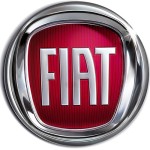
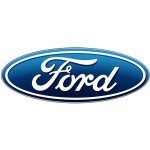





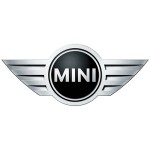

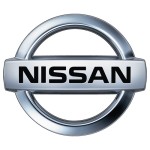
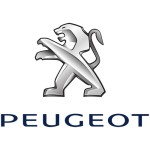
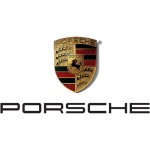
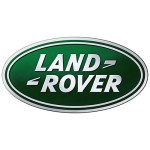
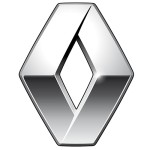

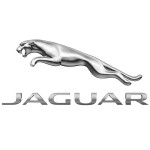




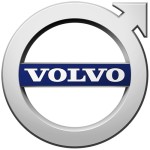

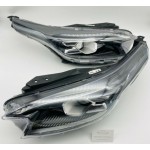
Leave a Comment